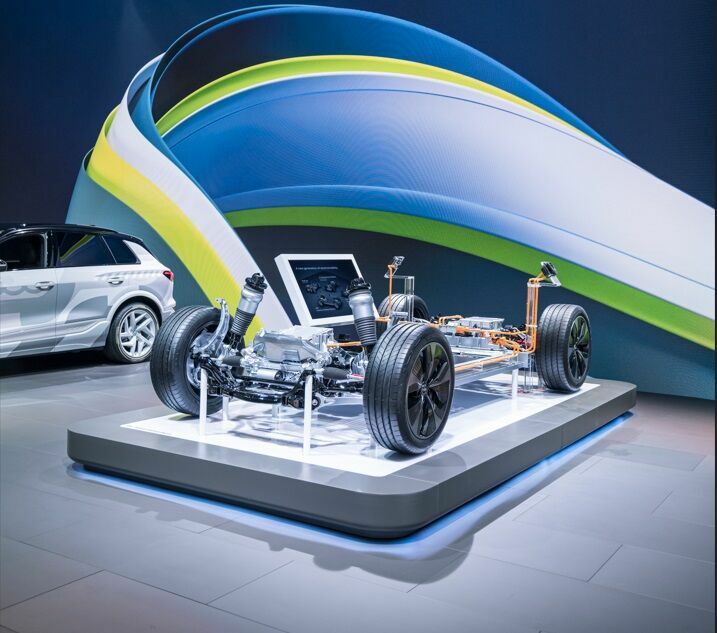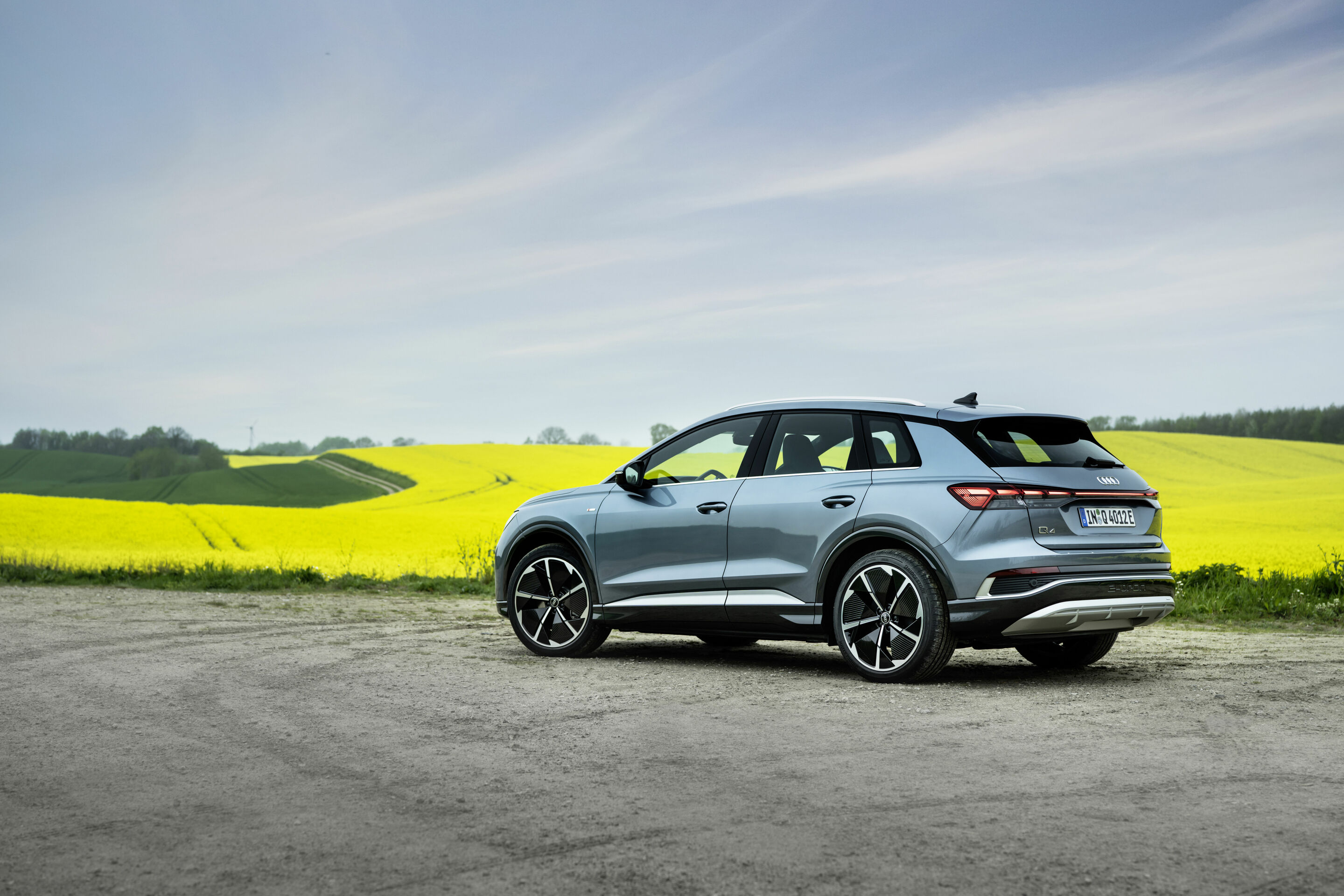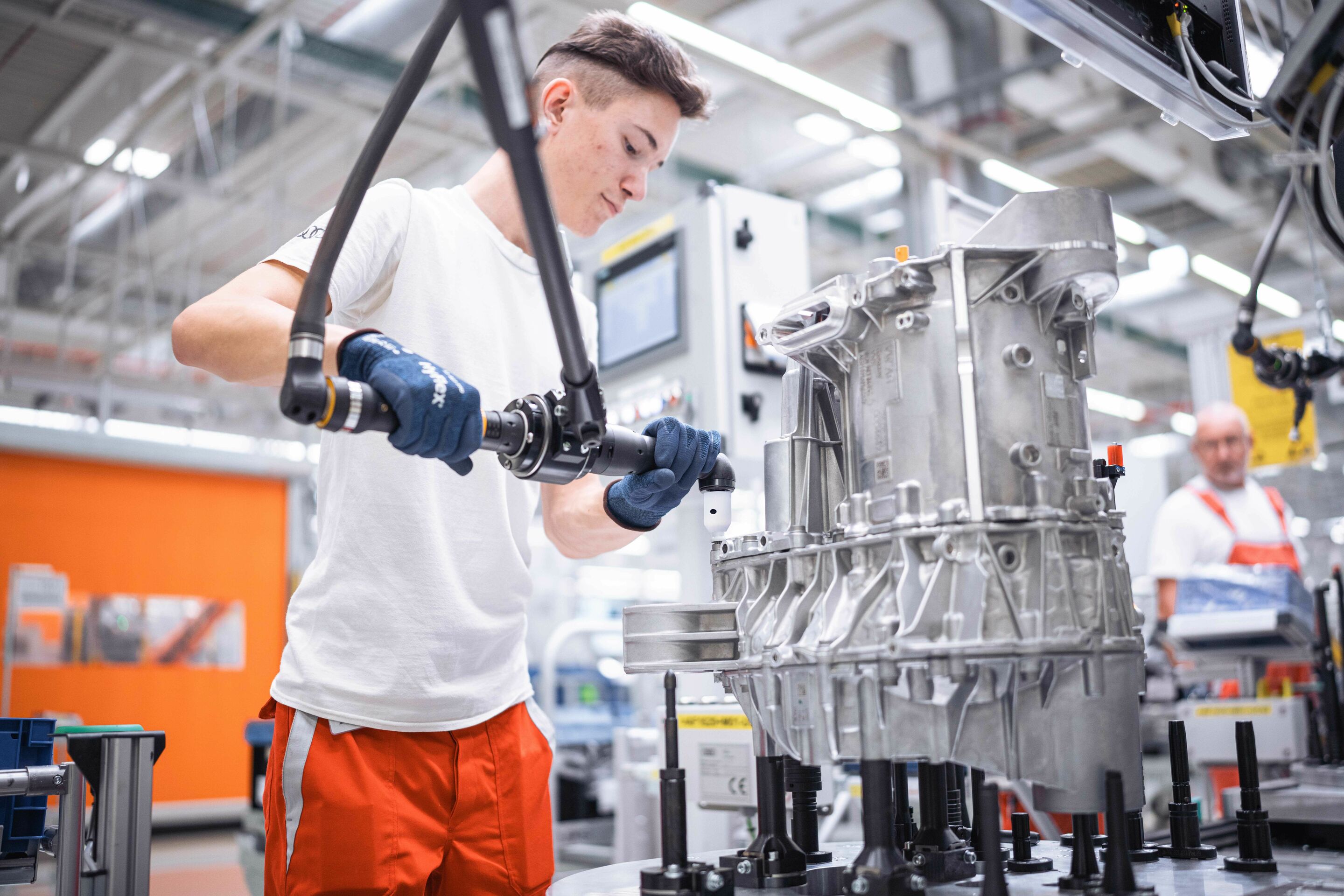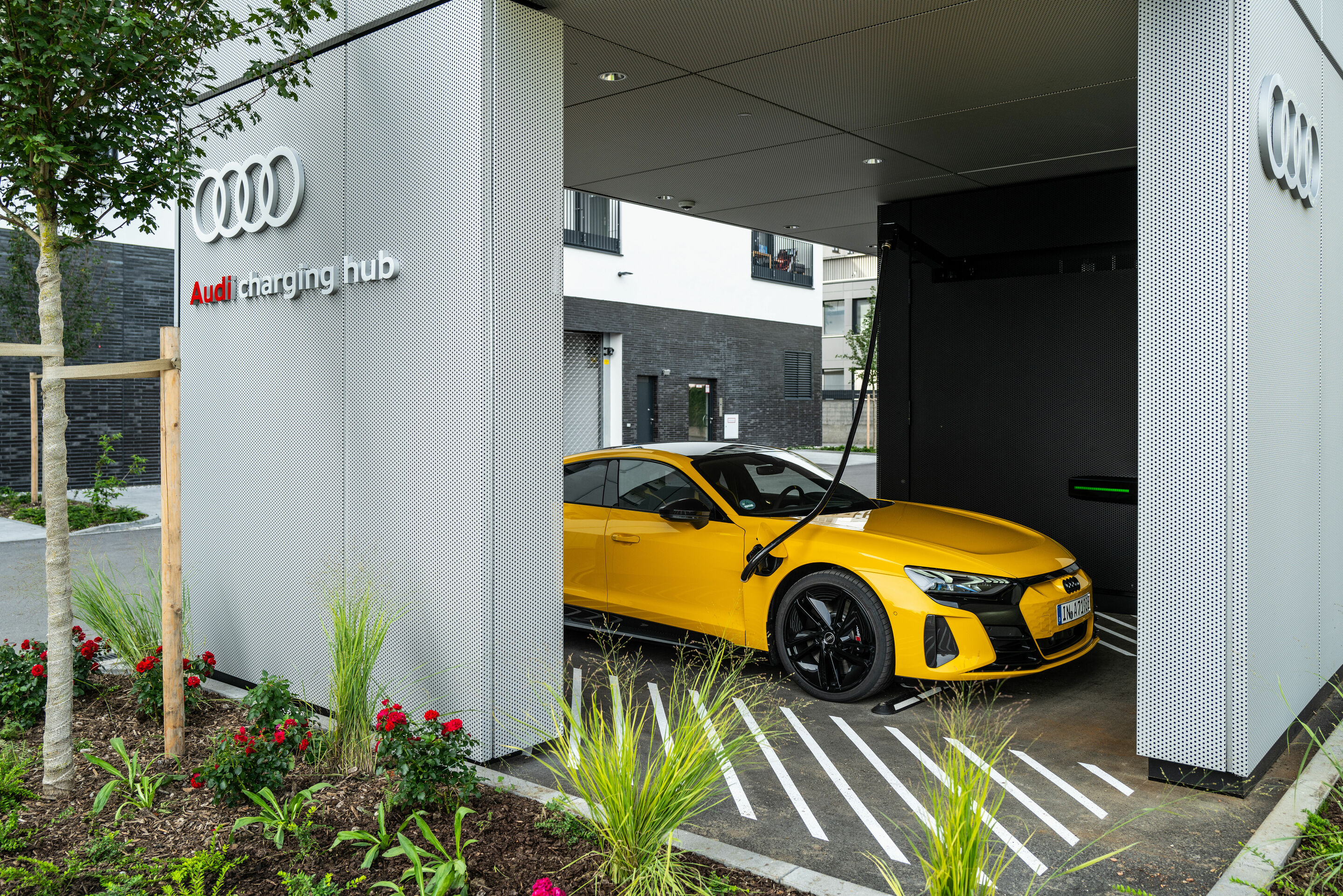Electric portfolio
A clear course towards electric mobility
Audi is electrifying its product portfolio step by step. The introduction of the Audi Q6 e-tron and the Audi A6 e-tron in 2024 marked an important step in this transformation. In the medium term, Audi wants to offer an all-electric vehicle in each of its core segments. The ambitious road map towards electric mobility also aims to gradually phase out the production of combustion-engine vehicles. For the electrification of its models, Audi is leveraging Group-wide synergies and has multiple cross-brand platforms at its disposal. The brand with the four rings’ actions promoting sustainable electric mobility include expanding green power and its own charging infrastructure, for example the Audi charging hubs.
“As part of a measure that started last year, we are fundamentally strengthening and rejuvenating our portfolio with numerous new models – again bringing our idea of Vorsprung durch Technik to the street,” says Gernot Döllner, CEO of AUDI AG. “Ultimately, our entire portfolio will be switched over to electric mobility. Along the way, we are positioned robustly and flexibly for the coming years with our new electric cars and a completely new generation of combustion models and plug-in hybrids,” says Gernot Döllner.
A constantly growing product range of fully electric models
With this corporate focus, Audi is expanding its growing product portfolio of fully electric models. In 2021, Audi introduced a compact SUV with the Audi Q4 e-tron series. The all-electric Gran Turismo Audi e-tron GT3 was launched the same year – and has been significantly improved in areas such as range, performance, charging, and handling since 2024. Since then, the model family has been comprised of the three variants Audi S e-tron GT, Audi RS e-tron GT, and Audi RS e-tron GT performance.
The Audi Q6 e-tron and the Audi A6 e-tron low-floor model set new standards in terms of performance, range, charging, and driving dynamics – with an 800-volt architecture, powerful electric motors, and modern battery and charging management. The 2024 launch of both models marked the beginning of numerous other model launches. In the medium term, Audi plans to offer an all-electric vehicle in each of its core segments. Audi is forging new paths to tap into additional tech-savvy customer groups, reduce product development times, and deliver more market-specific products. Together with SAIC, Audi has introduced a new brand developed specifically for the Chinese market for electric and intelligent models: AUDI.
The new brand combines the traditional strengths of Audi with SAIC’s speed of innovation. The first of a total of three production models will be launched as early as 2025. Within three years, the AUDI brand will introduce a model in the midsize class, an SUV, and a large sedan.
Platform strategy leverages synergies within the Group
The Audi Q6 e-tron and Audi A6 e-tron are based on the completely redesigned Premium Platform Electric (PPE), which was developed jointly by Audi and Porsche. The PPE is one of several cross-brand vehicle platforms and an example of Group-wide synergies. The platform was developed to bring high-volume, technologically advanced models to market. It is a modular platform system for mid-range and luxury models that was designed exclusively for battery electric drive systems. The new architecture is the next technological step for Audi on the brand’s path toward electric premium mobility. In terms of vehicle geometry, interior space, and weight distribution, the platform allows Audi to harness all the benefits of a fully electric vehicle.
The PPE harmonizes the technical substructure while remaining extremely flexible: Its highly scalable architecture can be used to build both low-floor and high-floor vehicles. The platform strategy allows the brand to optimally leverage synergies within the Volkswagen Group while also reducing development costs. At the same time, Audi is using the flexibility of the PPE to give future fully electric models their own unique character and Audi’s typical DNA.
PPE models with excellent efficiency and range
The platform’s systematic design for electric vehicles delivers benefits in terms of weight and package. What’s more, the components have been designed specifically for an electric drive system and fine-tuned to work perfectly together. The result is a compact and highly efficient drive and battery system. The efficiency measures alone for the new electric motors for the PPE result in roughly 40 kilometers more range compared to the first Audi e-tron from 2018. The electric motors for the PPE take up about 30 percent less space than the engines in predecessor models, and weigh about 20 percent less.
With the launch of the PPE, Audi is now the only brand in the Volkswagen Group that uses three electric platforms, affording it maximum flexibility. For example, the Audi Q4 e-tron and Q4 Sportback e-tron are based on the Volkswagen Group’s modular electric drive system (MEB). For the Audi e-tron GT, Audi uses Porsche’s J1 platform, while the Audi A6 e-tron and Audi Q6 e-tron are based on the PPE. In addition, the newly developed Premium Platform Combustion (PPC) ensures that vehicles with modern combustion engines and plug-in hybrids can remain competitive throughout their entire service life.
Audi is preparing all sites for electric mobility
Based on the decision to phase out combustion engines, Audi is currently taking steps to prepare all its locations for the production of electric cars. Today, the brand with the four rings is already producing its fully electric models at the main plant in Ingolstadt, at Böllinger Höfe in Neckarsulm, and at the multibrand plant in Zwickau.
The brand with the four rings is using the modifications made in the process of electrification to comprehensively reinvent its global production network. At the same time, Audi is optimizing its production processes. To make producing the Q6 e-tron and A6 e-tron series in Ingolstadt sustainable and efficient, Audi has integrated production areas such as the body shop for the PPE into existing structures. The company also set up its own battery assembly facility.
Since 2025, all Audi production sites worldwide have been net carbon neutral. To achieve this ambitious goal, all plants have been systematically avoiding and reducing emissions for a long time and using renewable energies wherever possible.
At the end of 2024, Audi FAW NEV Company Ltd. opened a state-of-the-art factory in the Chinese metropolis of Changchun for fully electric models that are also based on the PPE. As the Group’s newest production site, the plant will set new standards in digitalization, efficiency, and sustainability. With an annual capacity of more than 150,000 vehicles, the plant will play a central role in the continued electrification of the product portfolio for the Chinese market.
Systematic expansion of a holistic ecosystem
Audi is systematically expanding its holistic, digital ecosystem around its fully electric premium vehicles. An important pillar of this ecosystem is the charging offering from the brand with the four rings, which the company has identified as a success factor for electric mobility. For this reason, Audi works as intensively to expand the use of green power as it does to build a premium charging infrastructure.
Audi charging, for example, offers customers on the road access to one of the largest charging networks in Europe, with several hundreds of thousands of charging points in 28 countries. The service includes charging stations from the provider IONITY in addition to hubs.
The latter are being gradually expanded as part of a sophisticated charging concept that aims to seamlessly integrate electric mobility into everyday life. The Audi charging hubs are premium quick-charging stations that run on used and refurbished lithium-ion batteries. These so-called second-life batteries come from Audi’s test vehicles and help reduce the strain on local grid capacity.
As of: March 2025
MediaInfos
Press contacts
 Stefan Grillneder
Stefan Grillneder
 Christian Hartmann
Christian Hartmann













